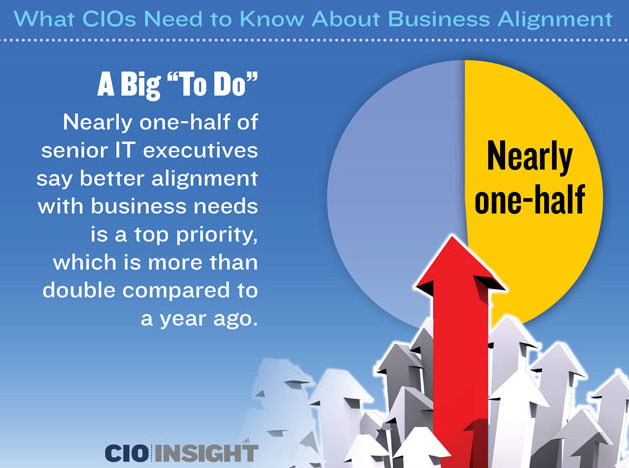Comprehensive Guide to Enterprise IT Service Automation
IT support automation uses software workflows, rule engines, AI/ML, and integrations to automate...
According to recent research, the top priority for CIOs is no longer cost cutting (as it had been for the past several years), but rather improving business processes. CIOs are well aware of the need...

According to recent research, the top priority for CIOs is no longer cost cutting (as it had been for the past several years), but rather improving business processes. CIOs are well aware of the need to align IT with business goals and their teams are confident in their ability to deliver.
Yet their efforts are too often thwarted by well-meaning but ill-conceived shadow IT initiatives. As described in What CIOs Need to Know About Business Alignment in CIO Insight, in many cases, the best efforts of CIOs and IT departments to support business needs “are undermined by the existing corporate culture. It’s difficult, after all, to work with business teams on optimal IT acquisition and usage when those same business teams go out and buy a load of apps without even telling the CIO or his or her tech team.”
 Per survey findings cited by CIO Insight, “More than one-quarter of IT pros equate the visibility of their IT department into their organization’s business initiatives to ‘a foggy day in London,’” and “76% of IT leaders say business applications are rolled out without engaging IT.”
Per survey findings cited by CIO Insight, “More than one-quarter of IT pros equate the visibility of their IT department into their organization’s business initiatives to ‘a foggy day in London,’” and “76% of IT leaders say business applications are rolled out without engaging IT.”
While business users believe that going around IT solves business needs more quickly, such actions can increase the risk of data breaches and waste money through redundant spending.
To protect corporate data, minimize costs, and optimally meet business needs, the CIO Insight article advises that organizations take the following four steps.
Get with stakeholders. Connect IT staff with business users to understand needs and pain points.
Match needs to IT capabilities. Avoid redundant spending; if IT already has capabilities in place, for example because the group has solved a similar problem for a different department or location, there’s no need to pay twice.
Enterprise request management (ERM) is one excellent example of this. IT can use the ERM portal (a.k.a., business service catalog) to communicate its capabilities to business users. Business process owners in other groups (HR, facilities, finance, etc.) can use the same tools and portal to offer their services to the business.
Using the same tool minimizes the investment required while simplifying life for employees by giving them one Web and mobile-accessible interface for requesting any service or resource from any department. The process of implementing ERM also fosters communication between IT and business users, and builds trust in the IT department among business process owners and departmental leaders.
Identify gaps. What current needs are not being met? And just as importantly, what’s the best approach for addressing them?
Not every “gap” requires a major investment in building or buying a new application. It may be a matter of creating new systems of engagement (user interfaces) atop existing systems of record (legacy management and control systems). This may involve accessing, analyzing, and manipulating combinations of data pulled from several existing applications or data sources.
Build the right team. We’ve found that great teams are often made up of individuals with broad general knowledge in business and technology combined with deep expertise in a specific area. Beyond the obvious (e.g., including both business and technology subject-matter experts), make teams as large as necessary, as small as feasible, and as passionate as possible.
Business users are often focused on speed. IT is focused on data security, standards, and efficiency. The best business solutions are a result of both groups connecting, understanding needs (and what’s already in place); identifying gaps; and coordinating efforts. This path avoids issues of “orphaned” applications, security risks, and redundant technology spending.
ERM is one example of this approach. It enables IT to communicate its offerings (such as brokered cloud services) to business users in a user-friendly manner. It also enables business process owners to create and expose their department’s service offerings to the business via a centralized portal–but with minimal IT assistance and built atop the departmental applications they are already comfortable with.
ERM puts business process owners in control (without going around IT); leverages existing technology investments; reduces service delivery costs; and simplifies the request management process for employees.

IT support automation uses software workflows, rule engines, AI/ML, and integrations to automate...

Business process reimagined is the strategic renewal of how work gets done by combining modern digital...

You've probably noticed (what we're calling) the "logo-swap test" lately: all the AI ads in market sound...